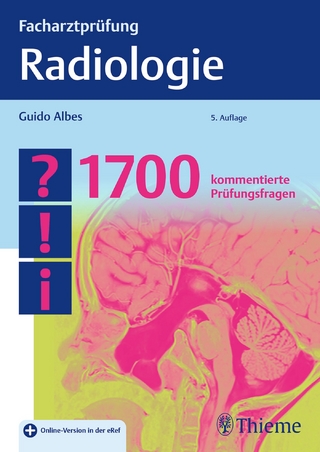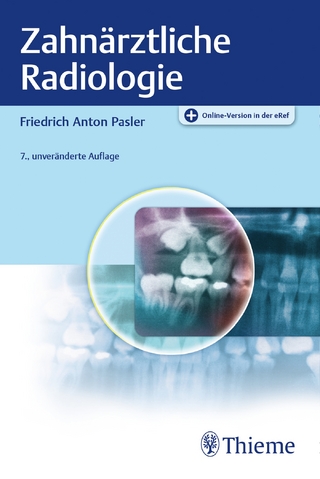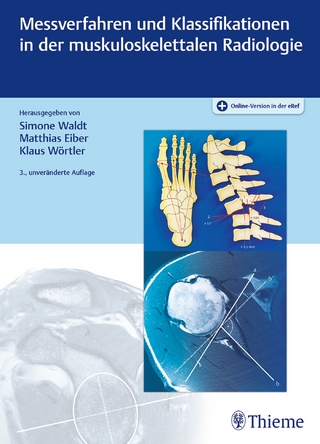
Emerging Technologies in Brachytherapy
Crc Press Inc (Verlag)
978-1-4987-3652-7 (ISBN)
Addressing this challenge, Emerging Technologies in Brachytherapy presents a comprehensive collection of chapters on the latest trending/emerging technologies and expert opinions. It is divided into five broad sections:
Section I: Physics of Brachytherapy
Section II: Imaging for Brachytherapy Guidance
Section III: Brachytherapy Suites
Section IV: Is Brachytherapy a Competitive Modality?
Section V: Vision 20/20: Industry Perspective
Each section has a carefully selected collection of chapters, which covers the spectrum of topics in comprehensive detail. By drawing on recognized experts and key opinion leaders from academia and commercial sectors worldwide (100+ contributors), Emerging Technologies in Brachytherapy provides readers with a wealth of relevant information needed to comprehend the rapidly advancing technologies and trends of today and the prospects for the future.
Dr. William Y. Song is the Head of the Department of Medical Physics at the Odette Cancer Centre, Sunnybrook Health Sciences Centre, in Toronto, Canada. This is one of the largest medical physics units in the world with 50+ staff. Along with a busy external beam radiotherapy program, the centre sees close to 600 brachytherapy patients a year, making it the busiest program in Canada. Since joining the centre in 2014, he has been an Associate Professor in the Department of Radiation Oncology, Adjunct Professor in the Institute of Medical Sciences, Institute of Biomaterials and Biomedical Engineering, and Department of Mechanical and Industrial Engineering, at the University of Toronto. He is also an Adjunct Professor in the Department of Physics, at the Ryerson University, Toronto, Canada. He received his PhD degree in 2006 at the University of Western Ontario, London, Canada, on the topic of image guided treatment approaches for prostate cancer. Since then, he has pursued research in the field of image guidance systems, 4D motion management technologies, and brachytherapy, resulting in over 50+ peer-reviewed publications and 130+ conference abstracts. Along the way, he became a fully certified medical physicist (American Board of Radiology, 2010), directly supervised(ing) 20+ MSc and PhD graduate students, an ad hoc reviewer for 20+ research journals, and is a member of the Board of Associate Editors for the Journal of Medical Physics. In brachytherapy particular, his research focus has been in developing novel applicators and MR image processing techniques that enhances plan quality and plan quality evaluations; one in particular, in cleverly designing MR-compatible metal alloys to create non-isotropic dose distributions that can, in combination with inverse planning, gain exceptional dosimetric conformality for use in image guided adaptive brachytherapy. Dr. Kari Tanderup is Professor at Department of Oncology, Aarhus University Hospital in Aarhus, Denmark. She was educated from Aarhus University with a master’s degree in physics and math in 1997. In 2008 she received her PhD degree with a thesis on brachytherapy in cervix cancer. Furthermore, since 2011, she has been appointed as visiting professor at Medical University of Vienna. At Aarhus University Hospital, Kari Tanderup chairs a research group working with brachytherapy and MR image guidance. Her main research interests are MRI guided cervix and prostate cancer, clinical studies, and in vivo dosimetry. Within these topics she has authored 90+ papers and has supervised 10+ PhD students. Furthermore, she was committee member for the ICRU Report 89 on brachytherapy in cervix cancer, and she is Associate Senior Editor for International Journal of Radiation Oncology, Biology and Physics. Kari Tanderup is actively contributing to committee and task group work in ESTRO and is course director in the ESTRO school. She is chairing the GEC ESTRO gyn network which represents the most active core European academic centers within gynecological brachytherapy, and embraces members from Central/Eastern Europe, India, Canada and USA. Through past and on-going activities this group is internationally recognized as a leading group in gynecological image guided brachytherapy. The group has published international guidelines, which are now used worldwide. The GEC ESTRO gyn group has also coordinated the EMBRACE study, which is an international multicenter study on MRI guided brachytherapy in cervix cancer. The EMBRACE trial has recruited >1400 patients, and this material is currently generating a wealth of clinical evidence on outcome as well as dose and effect relationships. Dr. Bradley R. Pieters, MD, PhD, is the Head of the Brachytherapy department at the Academic Medical Center in Amsterdam, The Netherlands. The AMC has a focus on Brachytherapy, Hyperthermia, and Image-guided radiotherapy. He was trained as radiation oncologist at the Radboud University Hospital in Nijmegen, The Netherlands. Because of his interest in brachytherapy he followed at the end of the residency a brachytherapy fellowship at the Daniel den Hoed clinic in Rotterdam and L'Institut Gustav-Roussy in Villejuif, France. Dr. Pieters received his MSc in epidemiology in 2006. In 2010 he received his PhD degree at the University of Amsterdam after defending his thesis "Pulsed-dose rate brachytherapy in prostate cancer." Dr. Pieters’ main field of interest is general brachytherapy with an emphasis on urologic brachytherapy, gynecologic brachytherapy, and pediatric brachytherapy. His research topics focus on prostate brachytherapy; development of advanced treatment planning optimization algorithms; external beam and brachytherapy dose summation in cervical cancer; and late effects assessment in pediatric brachytherapy. In his role as leader of the brachytherapy research group he supervises PhD students and contributed to more than 40 peer-reviewed papers with the majority concerning brachytherapy topics. He is one of the co-editors of Journal of Contemporary Brachytherapy and is member of the Editorial Board of Brachytherapy. For the GEC-ESTRO (Group Europeén de Curiethérapie-European Society for Radiotherapy and Oncology) he contributes as course director for the ‘Comprehensive and Practical Brachytherapy’ course and is member of the GEC-ESTRO Committee.
Introduction
Sources and Loading Technologies
Applicators
Applicator Reconstruction
Dose Calculation
Dose Optimization
Image Processing for Brachytherapy
FMEA for Brachytherapy
Real-Time In Vivo Dosimetry
Quality Assurance Technologies
Additive Manufacturing (3D Printing) in Brachytherapy
Robotics in Brachytherapy
Optical Imaging and Navigation Technologies
Ultrasound
X-Ray and Computed Tomography
Magnetic Resonance Imaging
Positron Emission Tomography
Imaging for Treatment Verification
Medical University of Vienna, Vienna, Austria
University Medical Center Utrecht, Utrecht, The Netherlands
Emerging Technologies in Brachytherapy
Hospital Charles Lemoyne, Montreal, Canada
Sunnybrook Health Sciences Centre, Toronto, Canada
Princess Margaret Cancer Centre, Toronto, Canada
Tata Memorial Hospital, Mumbai, India
Institut Joliot-Curie Cancer Center, Dakar, Senegal: Implementing a Brachytherapy Program in a Resource Limited Setting
EBRT or Brachytherapy?
Particle Therapy or Brachytherapy?
Is Brachytherapy Cost Effective?
Elekta Brachytherapy
Eckert & Ziegler BEBIG
| Erscheinungsdatum | 05.07.2017 |
|---|---|
| Reihe/Serie | Series in Medical Physics and Biomedical Engineering |
| Zusatzinfo | 17 Tables, black and white; 31 Line drawings, black and white; 89 Halftones, black and white; 21 Illustrations, color; 99 Illustrations, black and white |
| Verlagsort | Bosa Roca |
| Sprache | englisch |
| Maße | 178 x 254 mm |
| Gewicht | 1247 g |
| Themenwelt | Medizin / Pharmazie ► Medizinische Fachgebiete ► Onkologie |
| Medizinische Fachgebiete ► Radiologie / Bildgebende Verfahren ► Radiologie | |
| Naturwissenschaften ► Physik / Astronomie ► Angewandte Physik | |
| ISBN-10 | 1-4987-3652-1 / 1498736521 |
| ISBN-13 | 978-1-4987-3652-7 / 9781498736527 |
| Zustand | Neuware |
| Informationen gemäß Produktsicherheitsverordnung (GPSR) | |
| Haben Sie eine Frage zum Produkt? |
aus dem Bereich


